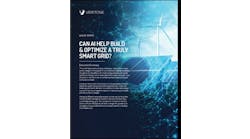Troy Miller, business development and marketing manager in the Power Quality Products Division at S&C Electric, sets the record straight on the need to pair energy storage with solar in microgrids
Recently I read where microgrids that generate half their power from solar supposedly don’t need energy storage. It might be true that they don’t need energy storage, but any microgrid developer that fails to include it in a photovoltaic (PV) project will miss out on a wide range of significant functional benefits that would help make the project successful.
As its basic core benefit, energy storage enables microgrids to operate using a non-carbon-emitting resource that allows distributed generation to synchronize with or without the presence of the grid. When PV generation is included within a microgrid, it requires what’s called a voltage source with which to synchronize. One of the drawbacks of renewable distributed generation is that it can’t operate in the absence of a voltage source, which is the utility under normal operating conditions. In the case of a utility outage, the options to create this required voltage source are to spin a back-up generator or use energy storage. The generator obviously comes with emissions.
Energy storage, however, provides more than just a supportive source of power. It also serves other valuable functions, including smoothing intermittent PV power flow, providing var support, stiffening the voltage for the remainder of the grid, and providing peak shaving. Energy storage can also help extend how long solar is generating power during the day by shifting PV output to be more coincident with peaks. Finally, it can help with islanding and black start, regardless of whether the solar resource is active.
This is just a small sample. There’s a whole bevy of additional functionality microgrids receive from energy storage that they’re not going to get from PV alone, regardless of whether solar represents half or more of the microgrid’s generation. As such, energy storage, we believe, is an essential building block for any microgrid.
As I’ve explained, microgrid developers that don’t use energy storage will lose out by ignoring significant performance-enhancing and cost-cutting functionality. And it’s why the leading microgrid projects, including Oncor’s System Operating Services Facility in Lancaster, Texas, and the Santa Rita Jail in Dublin, California, are finding continued value and savings from their energy storage investment.
Troy Miller is a business development and marketing manager in the Power Quality Products Division at S&C Electric. This blog originally appeared on S&C Electric‘s corporate blog, GridTalk






